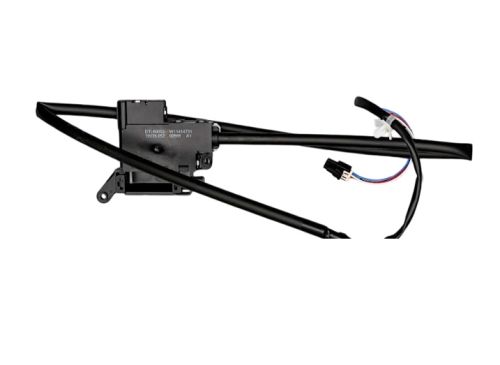
How to Keep Your Washing Machine Impeller in Top Condition
It is very important to maintain washing machine parts regularly to provide optimal performance and ensure a long washer lifespan. A washing machine that runs well and is well maintained will work efficiently, and clean effectively, but with low energy and water consumption. By regularly checking and servicing key components like the impeller and other elements of the washer can avoid common problems such as unwanted noises, inefficient cleaning, and operational breakdowns, saving you time and money.
|
Table of Contents: |
What is an Impeller in a Washing Machine?
A modern part of some washing machines, the washing machine impeller is used to move clothes through the water during the wash cycle. Unlike the traditional washer agitators, which are a central post with fins that move clothes around in a to and fro motion, the impeller uses a low profile design with fins or vanes that rotate to create a current in the water. The motion softly pushes clothes together, in a way that cleans effectively while being very gentle on fabrics.
Differences Between Washer Agitators and Impellers
When comparing washing machine agitators vs impellers, several key differences emerge:
|
Feature |
Agitators |
Impellers |
|
Movement |
Aggressive twisting and turning motion for washing. |
Gentle and uniform motion to clean clothes. |
|
Space |
Central post design limits drum space. |
More drum space is available for larger items. |
|
Water usage |
Typically uses more water for washing cycles. |
Consumes less water, offering greater efficiency. |
|
Fabric care |
May cause more wear and tear on clothes. |
Gentle on fabrics, reducing damage and wear. |
|
Efficiency |
Less efficient due to higher water usage. |
More efficient with potentially faster washing cycles. |
Indicators of a Malfunctioning Washing Machine Impeller
The impeller can experience wear and tear, leading to various issues. Here’s how to identify problems related to the impeller and some common signs to look out for:

How to Clean an Impeller Washing Machine
Cleaning your impeller washing machine is essential for maintaining its performance, preventing build-up, and eliminating odors. Here’s a step-by-step guide on how to clean impeller washing machines, including routine cleaning steps and deeper cleaning tips.
- Prepare the washing machine: Make sure there is nothing in the washing machine. Empty the drum and the detergent dispenser of any items.
- Run a cleaning cycle: You can use a cleaning cycle for many impeller washing machines. Pour two cups of white vinegar or a designated washing machine cleaner into the drum. Select the hottest water setting and make sure you begin the cleaning cycle. It will help dissolve any soap scum, grime, and other build-up.
- Wipe down the drum: Once the cycle is done, wipe down the inside of the drum with a microfiber cloth or a sponge. Dirt and debris can accumulate around the impeller and you will want to pay special attention to this area.
- Clean the detergent dispenser: Let the detergent dispenser tray soak in warm, soapy water and remove it. Soak it, scrub it to remove all traces of detergent, rinse well, and pop it back in the washing machine.
- Inspect the door seal: To check for trapped detergent or debris in the rubber gasket, around the door/wash drum. Make sure any build-up has not caused odors and wipe the cloth down with a damp cloth.
Discover the top 10 most common washing machine problems and expert solutions
Washing Machine Impeller Replacement
Unplug the washing machine from the electrical outlet to ensure safety while working on it.
Access the wash drum
- If necessary, remove the top panel of the washing machine, if available. It usually means unscrewing a few screws.
- For some washing machine designs, you’ll have to remove the agitator or the impeller cap to get to the impeller. Follow specific directions that are found in your user manual.
Remove the old impeller
- If your washing machine has an impeller, find the locking mechanism (which is typically a bolt or a nut) that holds it remains in position.
- Remove the lock bolt or nut using a socket wrench or suitable tool.
- Lift the old impeller off of the shaft, gently. If it’s not moving, wiggle it a little or apply a little gentle force.
Install the new impeller
- Place the new impeller in the spot where the old one was sitting on the spindle or shaft.
- Tighten the lock bolt or nut until it is snug, but don’t overtighten it because it will damage the part.
Reassemble the washing machine
- If you took off the agitator or impeller cap, replace it.
- Attach the top panel back on, making sure it’s aligned, and secure with screws.
Test the machine
- Plug the washing machine back in and perform a short cycle with no clothes loaded to make sure the new impeller is running correctly.
Keep your washing machine spotless and running efficiently with these expert cleaning tips
Washing Machine Maintenance Tips
Regular maintenance of the washing machine is important to ensure that it will function efficiently and last as long as possible.
Impeller washers need regular upkeep
- High-efficiency top load washers, or impeller washers, use less water and usually employ a different washing mechanism. Note also to check and clean regularly the impeller and the drum area to avoid the accumulation of detergent residues, lint, and all sorts of deposits.
Related components cleaning and inspection
- It’s worth making the time to clean components such as the washing machine drain pump and its impeller. See if the drain pump filter is blocked or obstructed with lint, hair, or debris that could prevent proper functioning.
Keeping the washing machine impellers in good shape is essential for the good operation of laundry operations. These are very important components that guarantee the good functioning of the apparel being cleaned, and the lack of maintenance of these can hamper the performance of the machine, expose the machine to wear and tear, and high repairs. Regular maintenance on the washing machine by having the appliance inspected regularly for critical parts like impellers, pumps, and hoses can help make the appliance more reliable and that can also prolong its lifespan.
FAQs
What are the advantages of impeller washing machines?
Impeller washing machines offer enhanced cleaning performance, energy efficiency, quiet operation, and gentleness on fabrics, making them ideal for modern laundry needs.
What are common issues with Bosch washing machine impellers?
Common issues include cracked or broken blades, debris accumulation causing clogs, and corrosion or mineral buildup from hard water.
How can deep cleaning maintain the performance of a washing machine?
By cleaning surrounding parts like hoses and filters, using a descaling solution to prevent mineral build-up, and following a regular maintenance schedule.











